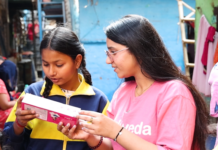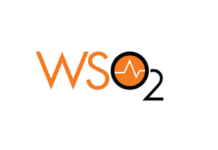Mumbai, October 31, 2016: Market dynamics and limited competition in biosimilars (approved versions of complex biologic drugs) and other life-saving drugs have resulted in little reduction in prices, making them unaffordable for many. Surprisingly, government measures to bring down their prices (through the Drug Price Control Orders, or DPCOs) too have been futile, making them out of reach for patients as treatments often run into lakhs of rupees. Biosimilars are used in cancer therapy, rheumatoid arthritis and other critical illnesses.
Even in the case of medicines for hepatitis B and C like sofosbuvir, tenofovir and entecavir, which were brought under price control, there has been little change in the access scenario. Take the example of two biosimilars — rituximab and trastuzumab — where there is not much change in MRP, even after government brought these drugs under price control in April and May respectively. The National Pharmaceutical Pricing Authority (NPPA) ceiling price for breast cancer drug trastuzumab is Rs 55,812 (440 mg), marginally lower than that charged by companies at around Rs 58,000, while the ceiling price of another cancer drug rituximab (500 mg) is Rs 36,947, close to the MRP of Ristova (innovator Roche’s brand) at Rs 37,500.
Ceiling prices are fixed by NPPA based on a simple average of price to retailer (MRP) of products of companies with over 1% market share. “Given this methodology, wherever the innovator has had an almost monopoly position, the price reduction before and after price control has not been significant. Therefore, given the same methodology being in force, a ceiling price revision after two years can be expected to bring about a further reduction consequent to more players participating in the market and offering products at competitive prices,” K V Subramaniam, president and CEO, Reliance Life Sciences, said. He added, “Ceiling prices help focus on competitiveness, and also facilitate growth of the market, driven by greater affordability for patients.”
In most cases, the ceiling price is close to the innovator’s price, indicating the methodology — based on average MRPs of the brands — is faulty, industry experts say. Leena Menghaney, treatment activist and lawyer, said, “The system devised by NPPA of fixing prices encourages companies to artificially keep prices high, and hence, works against patients and consumer interests, leaving essential medicines out of reach for most. Pharma companies charge high premiums for branded biological medicines, such as anti-cancer drug trastuzumab to maximise profits. Ironically, the benefits of generic production are not trickling down. The government has allowed both multinational and generic countries to profiteer out of the disease of people, driving millions of patients to death.”
The cost of production should be taken into consideration, where medicines included in the National List of Essential Medicines (NLEM) are linked to price control. This is because there is evidence that cost of producing certain off-patent registered drugs is cheap, based on cost of active pharmaceutical ingredient (raw material). “The market is not 100% perfect and, at times, anomalies creep in. In certain cases, there are limitations in making drugs affordable,” an NPPA official said.
In the case of hepatitis medicines, pharmacologist Andrew Hill from Liverpool University has calculated the treatment costs for a patient. “The drug entecavir is very cheap, and could be made for only $36 per year, or 10 cents per day. Sofosbuvir can be made for $1 per day, including a profit margin. So the ceiling price fixed by the government seems high,” Dr Hill told TOI.
The study estimates entecavir to cost $4 per year, based on quotations of API production from generics suppliers. With an additional $20 per year for formulation/packaging and a 50% profit margin, entecavir was estimated to cost $36 per person annually, substantially lower than current originator and generics prices in India.
In fact, prices of certain drugs like trastuzumab are negotiated by patients with distributors, and hence available at a 25-30% discount to the government price.
“The cost of biosimilars needs to be viewed in the context of global prices of these expensive biologics which are being provided in India at a fraction of their original cost. The cost of developing a biosimilar ranges between $50-150 million in comparison to a generic which costs around $3-5 million. The scale-up of manufacturing is extremely difficult and expensive unlike small molecule generic. In such a scenario, it will not be fair to expect a price fall in the range witnessed in small molecule generics. More importantly, companies offer further discounts for bulk orders through tenders which makes them cheaper than the ceiling price as well,” Kiran Mazumdar Shaw, CMD, Biocon, said.
Interestingly, faced with spiralling drug prices, many countries like the US are pursuing legislation which will force companies to either disclose R&D costs or explain pricing. This could help in bringing in transparency and fixing accountability. Pharma companies justify rising drug prices to high R&D cost. “Companies have benefited from subsidized land, infrastructure and other tax incentives given by government, for research and development. There is a need to have legal guidelines to know how much companies spend on R&D,” Menghaney added.
However, there is a section which feels that price control alone cannot improve access. “Competitive pricing, local production and compulsory licensing will drive down prices”, says Indian Pharmaceutical Alliance secretary general D G Shah. –ETHealthworld
























